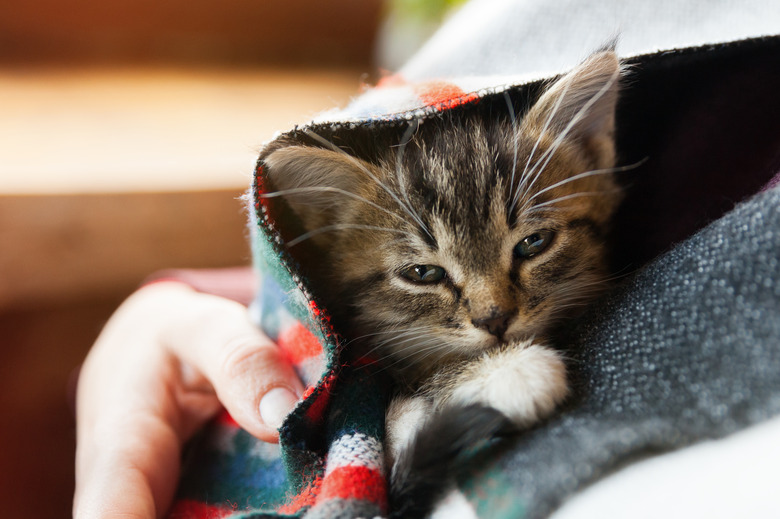How To Know When A Kitten Needs To Pee
Litter box training a kitten requires a different approach than housebreaking a dog, who can be taught to signal you when he needs to go outside. There are some overlaps, however, in terms of determining when the kitten needs to go. Getting your kitty accustomed to a litter box from the first day you bring her home will help ensure a clean, pee-free environment for everyone.
Create a Kitty Bathroom
Create a Kitty Bathroom
Set up a litter box in a low-traffic area of your home that's easy for your kitten to find and access. Ideally, a bathroom, laundry, or utility room is a good choice because accidents are relatively easy to clean up in these locations. You can also close your kitty into these small rooms with her litter box to get her accustomed to using her bathroom. Purchase a litter box that is easy for your kitten to climb into, and avoid covered boxes, at least initially, as some cats shy away from them.
Post-eating potty time
Post-eating potty time
After your kitten consumes food or water, she'll have to poop and pee within about 10 minutes. After feeding, take her directly to her litter box area and leave her alone. Cats like to go to the bathroom in private, and they naturally are attracted to areas where they can bury their leavings.
When your kitten successfully goes potty, show her praise and attention. Keep the litter box clean, but initially, leave a little of the pee behind so she'll recognize her scent and remember where she has to go to the bathroom.
Kneading to pee
Kneading to pee
Outside cats will look for a private area to paw the soft ground, go to the bathroom, and cover it up. You may find your kitten exhibiting this pre-pee digging behavior before urinating outside the litter box. This might happen if your cat is marking territory or is turned off by a dirty litter box. Your kitten also might do this upon waking, before she is completely trained to the litter box.
If you find your cat exhibiting this behavior, pick her up and take her to her litter box, but don't reprimand her for accidents. Instead, clean mistakes with an enzymatic cleaner designed to break down and eliminate all traces of the pee to prevent re-marking territory.
Assuming the position
Assuming the position
Kittens and cats squat when they're getting ready to urinate, so if you find your kitten squatting someplace she shouldn't, relocate her to her litter box immediately. If the kitten can't find a suitable place to go to the bathroom, she may choose a soft spot, like a towel on a bathroom floor or in a corner of carpeted flooring.
Crying out loud
Crying out loud
While a kitten can't bark like a dog to be let outside to go to the bathroom, a kitten who is litter box trained may cry or paw at a closed door if she is accidentally blocked off from her litter box. Wherever you place kitty's bathroom, make sure it's an area she has continual access to. You might even install a cat pet door inside your home if you want to have the option of closing off the cat litter box area while still allowing your cat constant access to her potty area.
